Vegetables have their seasons. It’s a happy thing eating in-season vegetables which are nutritious and rich, isn’t it? I was born and raised in a farmer’s house. I could eat fresh and delicious vegetables. However, I had to eat dishes which my mom cooked with the same vegetables every single day during the season. I hated it as a child. Aside from that, my grandfather gave me a chance to help peeling some vegetables, drying them and things like that. Now I think it was a good experience for me to learn the wisdom of people in the past. It was so interesting and a lot of fun for me. Today, I’ll be the one to tell you some of that wisdom : Dried vegetables.
Dried Vegetables in Japan

Drying ”Hosu 干す” is one of the oldest food preservation techniques of humans. Unlike in modern times, food preservation was a big problem for people in the past without refrigerators. Curing, salting, pickling, fermenting, smoking, etc… People thought about a lot of ways of preserving foods. It’s easy to imagine that drying was the easiest and a shortcut method of them all. As a proof, some shell mounds of dried vegetables were found from the Jomon era, a prehistory period up to 10,000 BCE of Japan.
Have you experienced letting some vegetables spoil before eating them in spite of having them fresh? Dried vegetables play a big part in the food loss problem. You can preserve food using those fruits, peels, leaves, and whole vegetables only by drying. Dried vegetables originated in the old wisdom that you eat in-season vegetables that are cheap and tasty without wasting them. Making them by harnessing the power of the sun makes condensed nutrients, its umami increases, and we can enjoy that texture. It turns into very enjoyable food!
Obviously, fresh vegetables are tasty, but would you like to try making in-season dried ones which are tasty and have a lot of nutrients?
It’s not difficult and doesn’t need much space. What’s more, all you have to do is cut them, dry them, and preserve them. It’s really easy and useful, and it can help your daily cooking, definitely!! Why not try it?
How to make it?

There are two ways of drying vegetables: completely dried and half dried.
To dry completely, you drain some vegetable juice over about one week. It stays fine, but it takes time to rehydrate with water. On the other hand, to dry half way, you dry a vegetable for just about half a day. The preservation level is low, but you can cook them the same way as fresh vegetables. You can also taste different textures with different cuts. You can cut it in many ways and make dried vegetables depending on what dishes you want to cook. I recommend the half dried way. It’s easy to reconstitute, and the texture is nice, in my opinion.
Let’s make dried vegetables!
Now, what kind of vegetables are suitable? If you’ve never made them, first try low moisture vegetables such as mushrooms, carrots, sweet potatoes, and Chinese radishes.


☆Cucumbers☆
Before I tried making dried vegetables, I used cucumbers only in a salad. Drying the cucumbers makes them suitable for cookedood. After losing their grassy taste, it will become suitable for a snack. Half drying is a good way to do it. It takes from a few hours to half a day.
☆mushrooms☆
It’s a great ingredient for dried vegetables. Very easy to make. It has a lot of Umami (旨味), so you can make a delicious dashi with it. When you make dried mushrooms, don’t rinse them. I recommend them to be sliced or split, and completely dried. You can keep them at room temperature.

☆carrots☆
Dry them without peeling them. That way, those carrots become sweeter. And don’t throw away the water in which to soak dried carrots. It makes a good Dashi (出汁), broth. Cutting them into long strips and bar rectangles would be useful.

☆Japanese radish☆
In Japan, Kiriboshi daikon (切り干し大根), a dried product of Japanese radish, is well known. Dried Japanese radish has a different texture and tastes fresh. I love both. Try making dried radishes and eating them. I’m sure you will like both of them. For dried radish, cutting them the same way as carrots is recommended.
☆onion☆
Onions are also good vegetables for drying. You just cut into long strips and spread them. It’s easy, right? Complete or half dried… both are OK. It’s a good ingredient for soup.
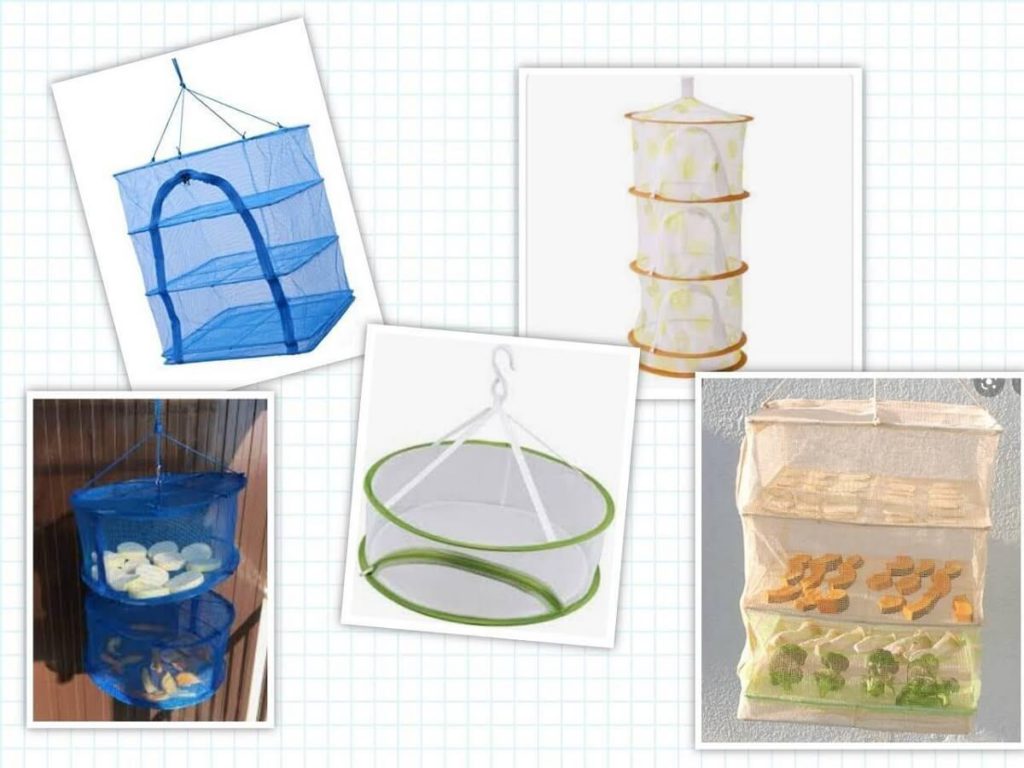
I like to use flat bamboo baskets to make dried vegetables. Nowadays, many kinds of nets are sold everywhere such as at Daiso. They are easy and useful nets, they do not take up much space, and you can dry a lot of vegetables at once. I’m sure you can find what you like!

After making these dried vegetables, you keep them in a resealable poly bag, like a Ziplock, or a jar etc. When you use them for cooking, you need to soak them for about 20 minutes until they’re completely dried. But you can use a half dried method for faster cooking.
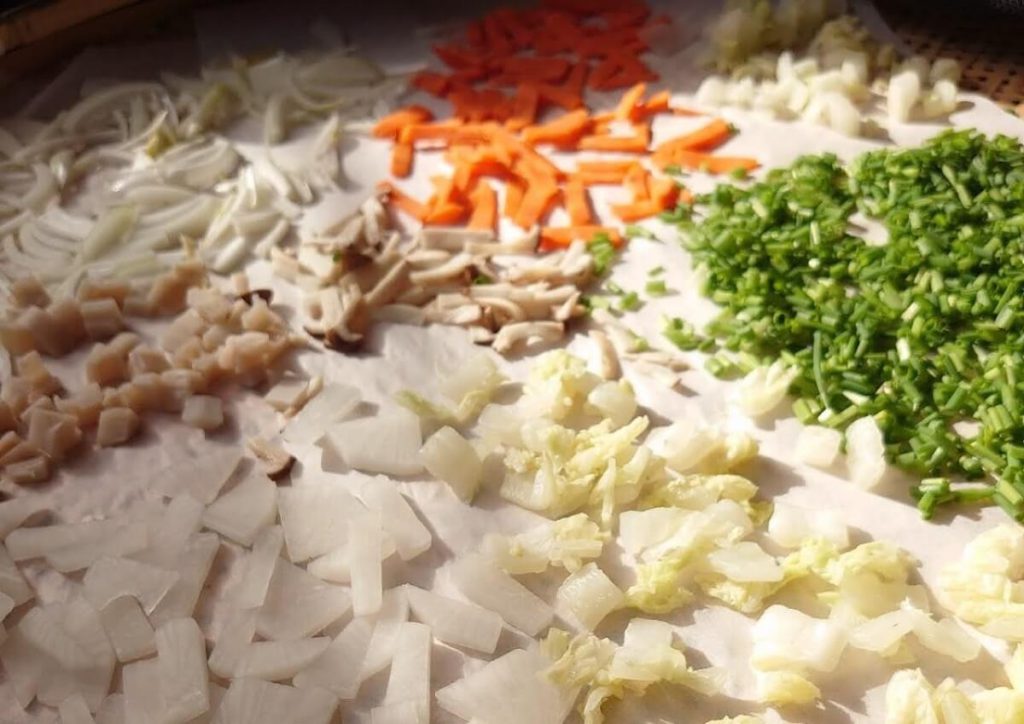
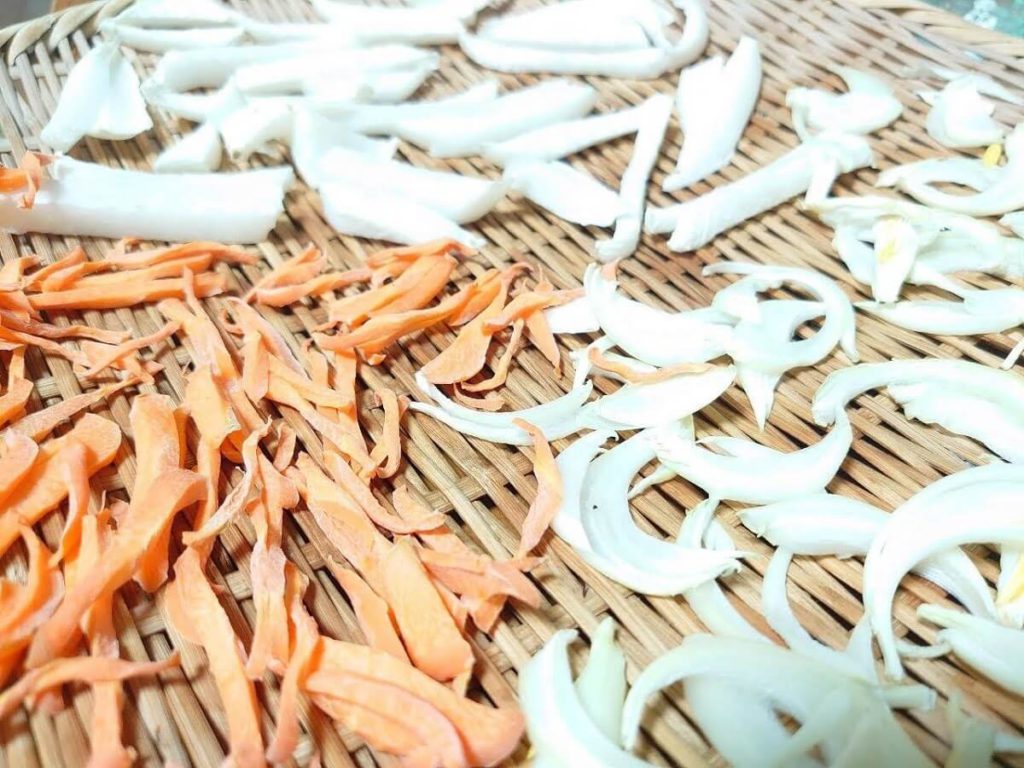
What did you think about dried vegetables after reading this? In our modern world, we can buy winter vegetables in summer and vice versa.. Sure, it’s really convenient. But why not appreciate each vegetable’s season for once? In the morning, you can leave some vegetable cuts spread, and when you come home, you just take them inside. They will turn tasty and deeply flavored while you are at work. I especially recommend it for busy people. These vegetables definitely help you. And do you look up at the sky and check the weather every morning when you get up? Do you feel the wind every morning? Making dried vegetables lets you look up at the sky and appreciate it more! Making dried vegetables gives you more of a chance to feel nature. We can thank the blessings of the sun. I’m sure it brings you a more relaxing and comfortable life. Try it!
Thank you for taking the time to read my article to the end. See you next time.
I’m a clay artist, and a master of Japanese calligraphy “Onore-sho”. I have my own shop in Ikaruga town, Nara, which is near Horyuji temple: world heritage site. And I’m a volunteer English tour guide. I enjoy learning English everyday.

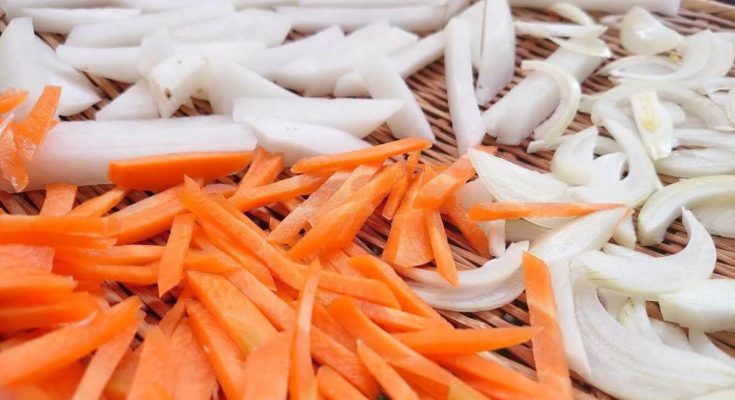

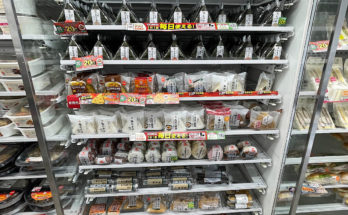

 HTJ has a YouTube page! Check it out
HTJ has a YouTube page! Check it out